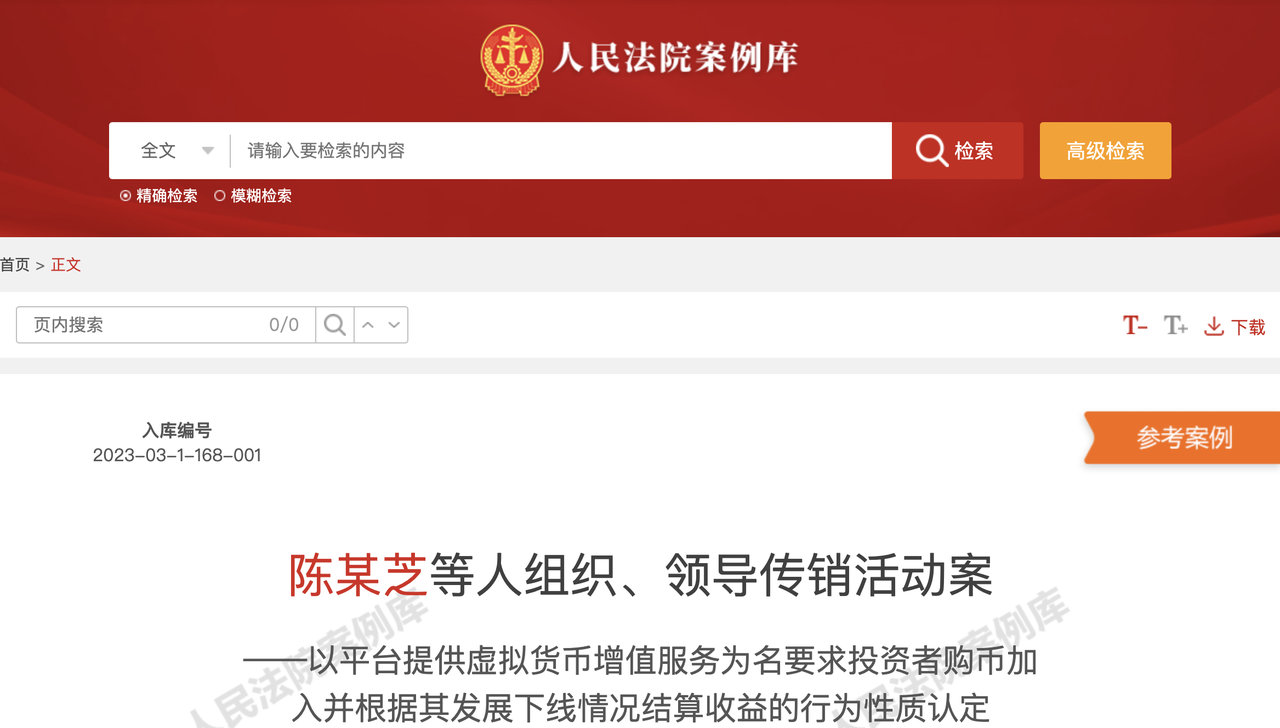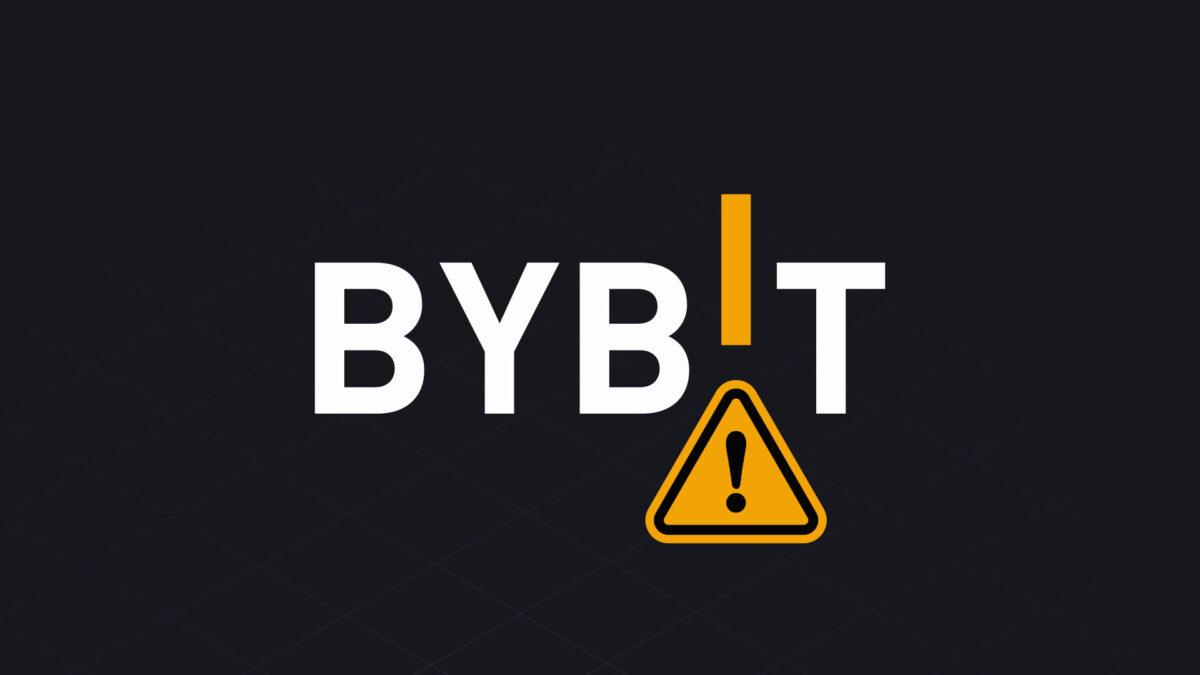Authors: Shao Shiwei, Xu Xiaohui, Song Kewei
A good Web3 project cannot do without a large user base. To this end, many project owners adopt the method of attracting new users and returning commissions to quickly attract users. But is there any legal risk? If involved, may there be administrative or criminal penalties?
In this article, Attorney Mankiw deeply analyzes a classic case included in the People's Court case library: the EOS Ecological Platform Case, and deeply analyzes how the Web3 project touches the compliance boundary of pyramid scheme crimes.

Why is providing virtual currency value-added services classified as pyramid selling?
The EOS ecological platform is a Web3 project that once attracted 450,000 members and involved a total amount of over 500 million yuan . However, the platform was eventually identified by the court as a pyramid scheme organization. The person in charge was found guilty of organizing and leading pyramid scheme activities. All assets involved in the case were confiscated, and nine members of the core team were sentenced to 2-5 years in prison.
Case Brief
In October 2018, the defendant Chen Mouzhi and others jointly established the EOS Ecological Platform (hereinafter referred to as the EOS Platform) pyramid scheme organization, and carried out pyramid scheme activities across the country through the Internet using EOS coins as a carrier. The main publicity methods are organizing on-site meetings, training, and establishing WeChat groups. In the name of providing virtual digital currency value-added services, the platform advertised that it can obtain income through the annual distribution of EOS coins, interest rate spread trading, candy airdrops, project crowdfunding mortgages, etc., but in fact, the platform does not have most of the above profit methods.
Participants need to pay 10-300 EOS coins to obtain the qualification to join the platform. After joining, members are organized into levels in a certain order , and the investment amount, the number of people developed, and the development level are directly or indirectly used as the basis for rebates , thereby inducing participants to continue to develop others to participate. In addition to obtaining static income based on the number of EOS coins invested by themselves, each participant also obtains dynamic income based on the number of downline people developed and the investment amount of downline.
The EOS platform was founded by nine defendants, namely, Chen Zhi, Ding Dong, Ding, Li Yan, Yu, Wang Fei, Sun Gang, Zhou Zheng, and Zhang Lin, who were responsible for the operation, planning, training, publicity, and daily management and coordination of the platform. After joining, the defendants Zhou Ping, Chen Jun, Chu Jie, Wang Lan, and Zhou Lin actively participated in promotion and publicity and recruited members. The defendants made illegal profits through the above-mentioned pyramid schemes.
On September 16, 2021, the People's Court of Dongtai City, Jiangsu Province, made a criminal judgment (2020) Su0981 Criminal First Instance No. 600: Each defendant was sentenced to fixed-term imprisonment ranging from two years to five years and ten months for the crime of organizing and leading pyramid selling activities, and was fined. The seized virtual currency shall be handled in accordance with the law, and the funds and proceeds obtained shall be confiscated in accordance with the law and turned over to the state treasury. The stolen money assisted by the defendants, pyramid selling participants, and their relatives and friends in withdrawing shall be recovered, confiscated in accordance with the law, and turned over to the state treasury. After the verdict was announced, Zhang Moulin and Ding Mou appealed, and the Intermediate People's Court of Yancheng City, Jiangsu Province, made a criminal ruling (2021) Su09 Criminal Final No. 421 on November 23, 2021: The appeal was dismissed and the original judgment was upheld.
Three legal red lines that EOS ecosystem platform has crossed
The legal documents regulating pyramid schemes in my country mainly include: the Criminal Law of the People's Republic of China, the Regulations on Prohibition of Pyramid Schemes, the Opinions of the Supreme People's Court, the Supreme People's Procuratorate and the Ministry of Public Security on Several Issues Concerning the Application of Law in Handling Criminal Cases of Organizing and Leading Pyramid Schemes, and the Provisions on the Standards for Filing and Prosecuting Criminal Cases under the Jurisdiction of Public Security Organs (II). Next, Mankiw will combine the current legal provisions of my country and the actual situation in judicial practice to provide Web3 entrepreneurs with an in-depth analysis of the pyramid scheme crime red lines that may be touched upon.
Entry Fees
First of all, users need to pay 10-300 EOS coins to qualify for joining the platform. According to the lowest market value of EOS coins during the case period (2018-2020), each user needs to pay approximately RMB 100-3,000 to qualify for joining the platform.
[Risk Warning]
The "crime of organizing and leading pyramid selling activities" stipulated in the Criminal Law has a broad interpretation of "entry fees", which can be satisfied by paying fees or purchasing goods and services. Of course, the mere existence of entry fees does not necessarily constitute this crime, but the payment of such fees is often combined with "multi-level rebates" and "false income", that is, the platform does not have a real profit model, and the entry fees of newcomers are the source of income for old people, increasing the risk of being identified as a pyramid selling crime.
Team compensation
Secondly, in order to quickly expand the community, the platform has set up dynamic income incentives linked to the number of downlines and investment amounts, and rebates are provided according to the level of invited members. The final level is as high as 58, and the number of members exceeds 450,000.
[Risk Warning]
"There are more than 30 people involved in pyramid schemes and the level is above three" is an obvious indicator to measure the scale of pyramid scheme crimes. First of all, in terms of the understanding of "level", the "level" or "level" here does not refer to the identity level within the organization, but the relationship level between the organizer, leader and the people involved in pyramid schemes. When calculating the level, the organization, the leader himself and his level are counted as one level. In addition, the "team compensation" mechanism is not uncommon in Web3 projects, and even in non-Web3 projects. The key to whether the judicial authorities determine whether this element is met is whether "recruiting people" is used as the basis for compensation.
Defrauding property
Finally, although the platform claimed that it would make profits through "interest rate differential trading, candy airdrops, system resources, etc." and exaggerated the project prospects to attract a large number of people to participate in pyramid selling activities, the project party did not establish the claimed profit scenario, and the vast majority of the income came from new users' recharges.
[Risk Warning]
The sources of income for many projects suspected of being pyramid schemes often lack real business support, which is what the legal provisions call "defrauding property." The definition of "defrauding property" here is quite broad, and the behavior of "defrauding" includes fraudulent means of fabricating facts and concealing the truth, such as fabricating and distorting national policies, fabricating and exaggerating business, investment, service projects and profit prospects, concealing the true source of remuneration and rebates, etc., and it does not require participants to feel that they have been "defrauded," as long as such behavior objectively exists.
To sum up, the EOS platform was eventually brought to justice by the police because it violated the three red lines of entry fees, team compensation, and fraud of property. It must serve as a warning to those who come after it.
Who will bear criminal responsibility?
In pyramid scheme crimes, both companies and individuals may bear administrative or even criminal liability. So, who may be identified as the criminal subject and bear criminal liability?
Penetration and Identification of the Criminal Subject of MLM
1. Core team full chain accountability
As for the founders/core team, they will basically be identified as organizers and leaders. In the case of the EOS platform, the nine founders played a major role in the project and were all identified as the main offenders. Specifically:
In terms of level , the people at higher risk are those who hold the following positions in the organization:
“Chairman” : The person responsible for initiating and planning a pyramid scheme
“General Manager” : The “organization manager” role that assumes management and coordination responsibilities
"Evangelist" : A person who is responsible for publicity and training in MLM activities
“Repeat offenders” :
Has been criminally punished for organizing or leading pyramid selling activities, or
Anyone who has been subject to administrative punishment for organizing or leading pyramid schemes within one year and who has directly or indirectly recruited more than 15 people at the third level or above to participate in pyramid schemes.
In terms of division of labor , those who are at higher risk are those who have the following responsibilities in the organization:
Technical department : People who write smart contracts and are responsible for the development of underlying code
Finance department : personnel who design dynamic/static profit distribution mechanisms, and are responsible for profit distribution and financial coordination
Operations department : People who plan community fission activities and are responsible for publicity and operations
2. Risks of external collaboration
In addition, there will also be legal risks for external collaborators. If they play a substantial role in promoting the expansion of the project, they may be convicted. In the EOS platform case, in addition to the founding team, those who joined the organization later and actively participated in the organization's promotional slogans were also sentenced. Therefore, community KOLs participating in the project, soft-text writers who charge fees to publish exaggerated profits, etc., also need to be vigilant.
How are pyramid scheme crimes sentenced?
1. Whether the case is serious or not
In terms of objective behavior, the criminal liability for pyramid scheme crimes is divided into two levels according to the severity of the circumstances. The basic sentence for pyramid scheme crimes is imprisonment of not more than five years or criminal detention , and a fine; if the circumstances are serious, the offender shall be sentenced to imprisonment of not less than five years and a fine.
So, what is the standard for judging whether the circumstances are serious? Attorney Mankiw summarized the following four aspects:
First, the number of people involved in the pyramid scheme reached more than 120 people;
Second, the amount of money, the amount of MLM funds directly or indirectly collected from participants in MLM activities is more than 2.5 million yuan;
Third, if a person is a repeat offender, and has been subject to criminal punishment for organizing or leading pyramid schemes, or has been subject to administrative punishment for organizing or leading pyramid schemes within one year, and has directly or indirectly recruited more than 60 people to participate in pyramid schemes;
Fourth, consequences, causing other serious consequences or adverse social impacts, such as causing mental disorders, suicide and other serious consequences among those involved in pyramid schemes.
2. Distinguishing between principal offender and accomplice
The identification of principal and accessory offenders is related to the final sentencing . So what is the standard for identifying principal and accessory offenders in pyramid scheme crimes? Combined with the above discussion, it is mainly based on the size of the role played and the irreplaceability of the activity, and indirectly based on the qualifications and ranks within the organization as the judgment criteria.
Judging from the verdict of the EOS platform case, the core team/founder team is generally identified as the principal offender of the pyramid scheme crime. The court document pointed out that "9 people, including the defendant Zhang Moulin, are responsible for or participate in the daily operation and decision-making of the platform. As core members of the platform, they should be identified as the principal offenders." And "the defendant Zhou Mouping and others actively participated in the promotion and publicity, and the development of members." In the joint crime, "they played a minor and auxiliary role, and were accomplices, and their punishment was reduced." Although there is no one-size-fits-all standard for distinguishing between principals and accomplices, the role played by the team often determines the final identification of the principal and accomplices, and they bear different criminal consequences.
Where is the boundary between administrative and criminal penalties for pyramid schemes?
Cumulative elements of administrative and criminal penalties
According to the State Council's "Regulations on Prohibition of Pyramid Schemes", pyramid schemes are mainly supervised by industrial and commercial administrative departments and public security organs at or above the county (district) level. Therefore, the regulatory bodies of the vast majority of pyramid scheme cases are the Municipal Supervision Bureau and the Public Security Bureau. So, when will Web3 pyramid schemes face criminal penalties and when will they face administrative penalties? Where is the boundary between the two? Lawyer Mankiw took a typical online pyramid scheme case announced by Zhejiang Province in 2024 as an example to deeply interpret the boundary between the two and provide compliance guidance for the majority of Web3 entrepreneurs.
There are a total of 9 cases in this batch of pyramid schemes, of which 4 involved administrative penalties and 5 involved criminal penalties.

If the three characteristics of pyramid schemes are entry fees, team compensation, and fraud, then what is the most important of the three elements for administrative penalties? Lawyer Mankiw believes that it is " team compensation" , that is, the number of people developed is used as the basis for compensation, and the incentive method is set according to the upper and lower hierarchical relationship.
As for whether the MLM personnel charge entry fees and whether they defraud money and property, the existence of these two elements is not the primary factor considered in administrative penalties, but if these elements exist , it will undoubtedly increase the risk of the project being subject to administrative or even criminal penalties.
Compared with the cases of the same batch of criminal offenses, what exactly makes pyramid schemes go from illegal to criminal? Lawyer Mankiw believes that the most critical element is the element of "defrauding property" . The suspects in pyramid schemes will use deceptive means, exaggerate prospects, and use agitational rhetoric, such as "letting every ordinary person open a shop and become a boss" as the goal, and promote their platform to the public "jade trading time is short, the profit is high, and you can become a boss in 30 days"; in addition, this deception has obtained a considerable amount of property, and on the basis of team compensation, the coverage is relatively wide, reaching the standard for filing a criminal case.
To sum up, if the behavior meets the characteristics of "team compensation" , the perpetrator may bear the administrative penalty consequences of pyramid selling. If the behavior meets the characteristics of "team compensation + fraudulent property" , it may be identified as criminally punishable by the competent authority.
Pyramid selling may be subject to both administrative and criminal penalties
Although there are differences between administrative and criminal penalties for pyramid schemes, there is a possibility that both penalties will be imposed in legislation and practice. According to Article 13 of the Regulations on Prohibition of Pyramid Schemes: "When the industrial and commercial administrative department investigates and handles pyramid schemes, it shall transfer suspected crimes to the public security organs for investigation in accordance with the law; when the public security organs investigate pyramid schemes, if the investigation does not constitute a crime, they shall transfer them to the industrial and commercial administrative department for investigation and handling in accordance with the law."
From this, we can see that the "market supervision bureau" and the "public security bureau" will cooperate with each other in the process of investigating and punishing pyramid schemes. For example, a certain industrial and commercial bureau filed a case against a shopping alliance website suspected of pyramid schemes. After the industrial and commercial bureau made a penalty decision to confiscate illegal gains and impose a fine in accordance with the "Regulations on Prohibition of Pyramid Schemes", it transferred the case to the public security department. In the parallel criminal procedure, the person in charge of the website was detained by the public security department for suspected pyramid schemes, and was arrested and prosecuted, and later sentenced to fixed-term imprisonment and a fine.
Therefore, Web3 entrepreneurs need to pay special attention to compliance requirements when designing business models. After all, the boundaries between administrative and criminal penalties for pyramid schemes are not clear-cut. "If you walk by the river often, you will get your feet wet." Avoiding illegal activities is the fundamental solution to the longevity of a project.
Attorney Mankiw's Summary
In the context of China's strong regulatory policy on virtual currencies, it is particularly important to avoid legal liability caused by pyramid schemes and other behaviors. Compliance is not only the responsibility of project organizers and leaders, but also concerns every individual involved in virtual currency transactions.
This article analyzes the typical case of EOS ecological platform, analyzes the behavioral characteristics and targets of Web3 projects that have been identified as organizing and leading pyramid schemes; at the same time, combined with specific punishment cases in Zhejiang Province, points out the differences in the constituent elements of illegal pyramid schemes and criminal acts, as well as the possibility of both being punished at the same time.
In general, pyramid schemes may face legal risks of both administrative and criminal penalties, so compliance issues are crucial whether organizing or participating in Web3 projects. If you have any questions, please contact Shanghai Mankiw Law Firm, which focuses on criminal compliance in the Web3 field and is committed to providing you with industry-leading criminal legal services.







